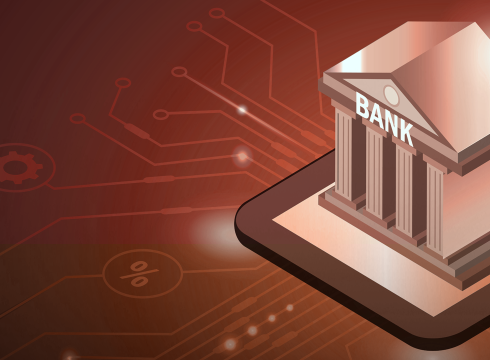The Age of Value Added Digital Financial Services

What Are Value Added Digital Financial Services?
If you work in the financial sector, you may already know that value added digital financial services are currently the highest priority for financial institutions and Fintechs. If not, you may have already used one of these services without even realising it. Value added digital financial services can refer to a wide range of services such as digital loyalty schemes, mobile financial services, e-government services, and more. For a bank, a value added digital service could be anything beyond their core banking operations that they offer customers. For example, your bank might offer online career advice or cybersecurity consultations.
Fintech (financial technology) companies may be based entirely around these services, like mobile wallets and integrated digital payments. These MFS (mobile financial services) are in the ascendancy, with more and more customers preferring digital to cash payment. The ability to integrate these services with consumers’ smart devices (ie. iOS/Android HCE wallet) has also become a key factor in differentiation and customer engagement in the financial sector.
Digital Financial Services in Latin America, Asia, and Africa
Despite the country’s initial reluctance over digital financial services, China has become a major market for digital financial inclusion. According to figures from the Chinese Academy of Financial Inclusion (CAFI), there are currently more than 1 billion active users of some form of DFI in China. In 2017, China topped the world for the most digital payments processed. The Chinese market has seen a rapid growth of these services from an almost non-existent state in the early 2000s. Studies from both CAFI and the IMF suggest that the rise of digital services lowered the cost of financial services in China, (Previously used to a traditional, nationally supported, banking system with high interest rates) thus increasing the availability of finance and financial support to small businesses and individuals. The success of digital payment platform Alipay, spurred on by periods of lockdown with SARS in 2003 and now COVID, has fundamentally shifted the market toward digital payment over traditional cash options.
Other nations have taken note of the effect of greater financial inclusion. In Africa, the lower cost finance provided by these digital options has seen enterprising governments make allowances for the change to digital, lowering fees and increasing mobile transaction limits. The recent IMF study shows that Ghana, Kenya, and Uganda are the frontrunners for digital financial inclusion among the African nations. Several sources have identified Latin America as another market that could greatly benefit from wider financial inclusion but so far, uptake of digital services is slower here than elsewhere. The Inter American Development Bank recently identified network infrastructure as a key factor in the restriction of growth. Many areas do not have access to the 5G networks required for these services.
The Importance of Value Added Financial Services for Customers
The benefits of value added financial services to the customer are wide-ranging. In the previous paragraph, we discussed how a move to digital services can reduce costs for financial providers. These savings have meant more inclusive access to finance at better interest rates across the board. Wider availability of lower cost finance and lower cost access to financial services will help customers across mixed economic backgrounds.
Value added services don’t stop at accessing financial options online though. The convenience of a centralised digital wallet, for example, is an idea that more and more consumers are becoming used to. In the UK, we have seen many successful examples of traditional banks offering wider-ranging digital services. The switch to smart device-based banking apps has seen increased convenience for consumers, often coming with the ability to pay utilities, transport, credit card bills, and more from one central account without having to change physical location.
Mobile financial services are in particular demand. The appeal of having a single device where you can access your bank account, pay your bills, access government services, and of course access entertainment services, is obvious. Further integration of services into this environment is high on the list of customer priorities. Further collaboration between banks and Fintechs will see higher levels of security and trust in these products which will only increase uptake further.
Benefits and Challenges
As banks start to collaborate with Fintech companies to develop these services further, customer trust in these products is growing. A recent study by Deloitte showed that the main barrier to uptake of digital and mobile financial services from the customer’s perspective is security. According to the same market research, being able to trust a provider is the main reason a customer would choose one financial provider over another. This suggests a huge opportunity for a traditional bank moving into this market with the potential for collaboration with experienced Fintechs. A trusted name plus a secure product would meet the market’s needs here perfectly.
The challenge, then, is how to ensure that the security of these services is close to unbreakable. The more accounts and services you can access in one place, the more theoretical risk, from the customer’s point of view. Integrating the traditional high-security approach of a bank with the new security potential offered by smart devices, like voice recognition, facial recognition, and biometrics should go some way toward alleviating these concerns.
The benefits of these digital financial services to developing countries and emergent markets are potentially huge. Wider availability of finance across these markets has lead to sustainable economic growth in those countries who have championed these services. This comes with challenges like the cost of infrastructure, which may not be in place at all or may need upgrading, and security. Areas like Latin America are facing issues with existing financial regulation, with data regulation lagging behind areas where progress has been made.
The data from most sources agrees that collaboration is key in bringing value added digital financial services forward. Banks bringing financial expertise, Fintechs bringing advances in digital technology and cybersecurity, and governments working to update legislation and digital policies and investing in infrastructure. Doing so could potentially reap enormous benefits for businesses and customers alike.




